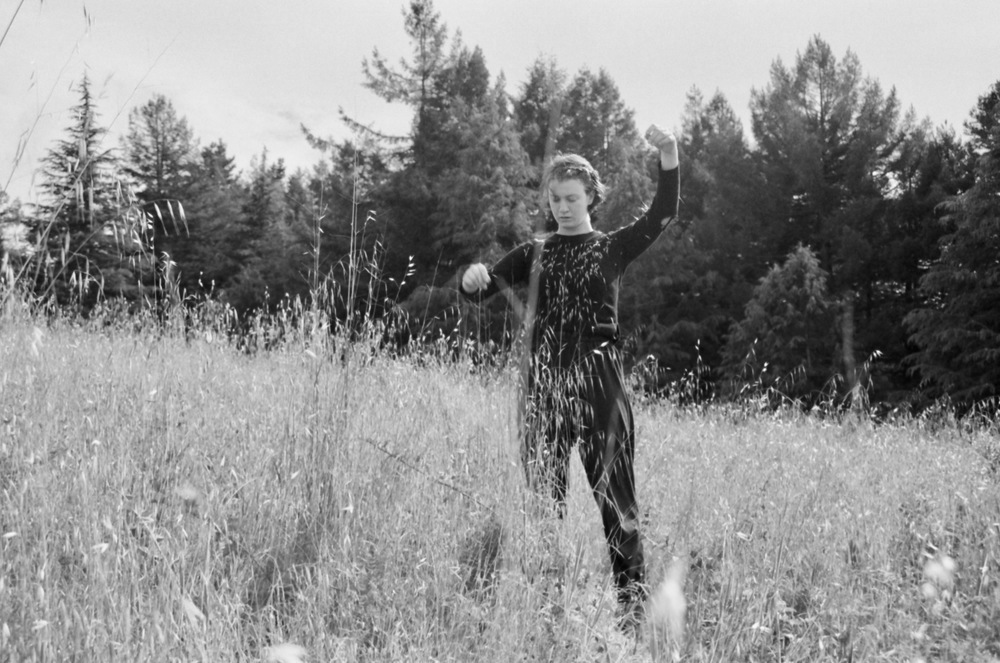
GETTING INTO THE WEEDS
first performed on May 16, 2020
A grassy field
performed -1 times in 2020
SOPHIE LEV
Santa Cruz, CA
sophielev.com
GETTING INTO THE WEEDS
SOPHIE LEV
In this performance, I repeat the movements associated with sensory childhood memories of encountering weeds in the context of my work as a landscaper. I strip the Milky Oats (Avena sativa, a non-native “weed”) of its seeds, throwing them up in the air and catching them on my chest. I begin softly, with caressing movements of childhood that fondle and gently stroke the grass, curiously removing the seeds and placing them on my body. My movements become increasingly aggressive, until I am ripping the seed pods from the stalks, and the stalks from the ground. My body, now covered in seeds, becomes camouflaged by the surrounding grasses. As the stalks are ripped bare, I am no longer obscured and instead stand in stark contrast to the stripped field. Then, I begin weeding the seeds off of myself. Slowly at first, with a caressing and curious touch, growing increasingly aggressive until I am ripping at my clothing. I am left with spikes of the seeds in my sweater which I wear for the rest of the day.
I engage in a choreography that attempts to trouble the category of “weed” through performing the sensory and affective experience of touching milky oat across positions: as child, as artist, as laborer. What is it to develop a nostalgic emotional landscape attached to weedy or invasive plants? How is the category of “weed” itself shaped and made by the performance of those who engage with it? Milky Oats traverses the designation of “weed” throughout the duration of the piece as I perform it from different standpoints. In each of these positions, the plant transforms from static object upon which a designation is placed, to an active entity which shapes my affective landscape of memory, curiosity, and work. The double entendre in the performance reiterates the active force of the plant: I not only rip it out, but by ripping and throwing on my body, so do I become “weedy.” This camouflage process is meant to contextualize the reciprocal performance of performing weeds and being performed by them. In the durational and repeated process of removal, I make visual the metaphor of “getting into the weeds,” a synonym for immersion in complexity. As I try to parse apart the mutable designations of the plant, I become increasingly mired in the entanglements that performing and being performed by weeds unveils.